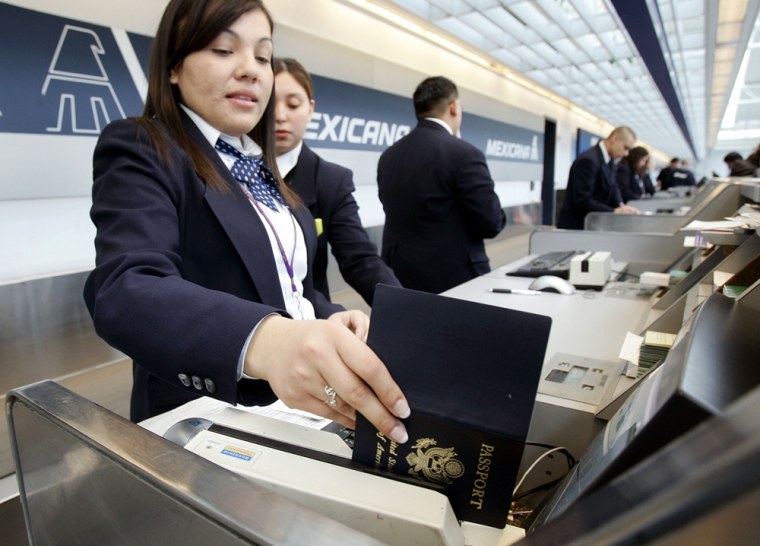You have to give the folks at the Passport Services Office points for creativity.
Last month, when they wanted to conduct a public briefing on the upcoming changes to U.S. passport requirements, they could have held it in some sterile conference room in the bowels of the State Department in Washington, D.C.
Instead, they decided to hold the briefing in the other Washington and set up shop in the sleepy town of Point Roberts (pop. 1,500) in the northwest corner of the state. “The Point,” as the locals call it, is not only nearly 2,400 miles from the nation’s capital, but so remote that if you’re driving in from anywhere else in the country, you have to go through Customs twice just to get there.
Having the appropriate ID is probably a good idea.
New rules take effect next year
The Pt. Bob briefing was part of the government’s ongoing efforts to get the word out about the next stage of the Western Hemisphere Travel Initiative (WHTI), which mandates stricter requirements for all travelers, including U.S. citizens, entering or re-entering the United States.
Under the initiative, U.S. citizens 16 and older will no longer be able to travel between the U.S. and Canada, Mexico, Bermuda or the Caribbean with just a birth certificate and driver’s license. Air travelers have been required to have a passport since January 2007; those crossing the border by land or sea will need WHTI-compliant ID (see below) as of June 1, 2009.
(Two exceptions where a birth certificate will still suffice: U.S. citizens 16 or younger returning from WHTI countries by land or sea and passengers on cruises within WHTI countries that start and end in the same U.S. city. Note, though, that individual cruise lines may still require a WHTI-compliant ID.)
The idea is to limit the number of acceptable IDs to a handful — there are currently 7,000 types of birth certificates issued in the U.S. — in order to heighten security and streamline the system. Options range from the traditional passport book to a variety of alternatives designed for those who live near the border or cross it frequently.
That’s certainly the case in Pt. Bob, which, for those who’ve never been, is one of the most anomalous places in the nation. Essentially an outer suburb of Vancouver, B.C., the 4.9-square-mile town is only part of the U.S. because it sits at the end of a peninsula that dangles over the 49th parallel that forms the border in these parts. It’s like a geographic uvula, hanging down into Boundary Bay, with one road in and out and the rest of Washington state a 25-mile drive through Canada — and two border crossings — away.
Needless to say, most of us don’t have to go through Customs to visit the dentist or pick up a prescription. Nevertheless, with changes to the border-crossing rules on the horizon, it’s worth knowing what the options are.
Different travelers, different ID options
If past history is any indication, there will likely be a crush of passport applications in the months before the June deadline, so it makes sense to start the process now. Depending on your travel plans, you may want to consider one of the following documents:
Passport: The original blue book is valid for entry into the U.S. by land, sea or air and is the only valid document for most travelers entering the U.S. from non-WHTI countries. First-time applications are $100 for those 16 or older, $85 for those 15 or younger. Adult renewals are $75.
Passport card: Introduced this summer, the new passport card is a wallet-sized card that is valid for travel between the U.S. and WHTI countries when crossing by land or sea. It is not valid for air travel. Fees are $45 (16 or older), $35 (15 and younger) and $20 if ordered when applying for a new or renewed passport book.
NEXUS and SENTRI cards: Designed for frequent border crossers, these cards provide expedited crossing between the U.S., Canada and Mexico for travelers willing to undergo a background check, in-depth interview and fingerprinting. The NEXUS card is valid between the U.S. and Canada; the SENTRI card, between the U.S. and Mexico. Fees are $50 and $122.25, respectively.
Enhanced driver’s licenses (EDLs): Several states are developing EDL programs, which, like the passport card, will be valid for border crossings by land or sea (but not air). Currently, Washington state and New York offer an EDL option — at a $15 and $30 premium over standard driver’s licenses, respectively — with Vermont and Michigan expected to introduce versions in early 2009.
Special cases: There are also specific documents for select audiences, including Native Americans, Lawful Permanent Residents and truck drivers. For more information on these and the documents described above, click here.
The alternative, of course, is to stay within the U.S. There’s nothing wrong with that, although you’d probably miss The Point entirely.
